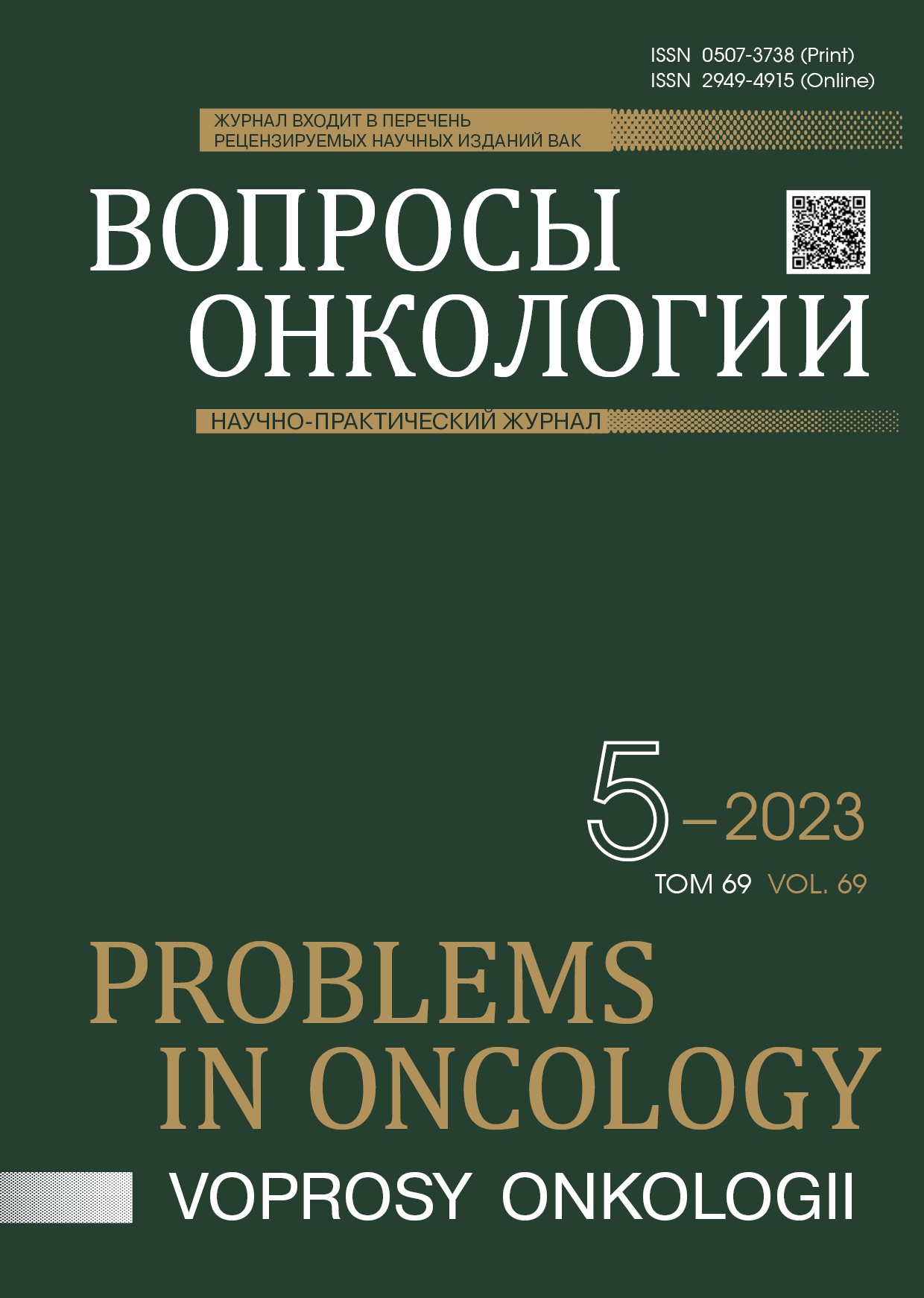Abstract
Aim. To examine exhaled air samples from lung cancer patients and identify shared signal markers detectable through an artificial neural network that ensures uniformity in the sampling process using a sensor-based gas analysis system.
Materials and methods. During the study, samples of exhaled air were collected from 90 individuals aged 22 to 95 years for the period of 2020-2021. All participants in the study were divided into two groups: the test and the control group. The main group included patients with morphologically verified lung malignancies at stage T1-4N0-3M0-1 (n = 21). The control group included individuals with no clinical data of malignant pathology at the time of the study (based on medical history or previous examination data, if available). A gas analysis system capable of analyzing gas samples in two modes - direct inhalation into the chamber or the use of gas sample bags was developed. This study used remote sampling from bags due to the COVID-19 pandemic.
Results. The accuracy of lung cancer diagnosis was 85.71 %, sensitivity was 95.24 %, and specificity was 76.19 %. The lung cancer diagnosis accuracy reached 85.71 %, with sensitivity at 95.24 % and specificity at 76.19 %. Key attributes of our method comprise equipment mobility, adaptability to various medical facilities, simplicity, cost-effectiveness, and unhindered tumor screening potential in a broad population.
References
Sung H, Ferlay J, Siegel RL, et al. Global Cancer Statistics 2020: GLOBOCAN estimates of incidence and mortality worldwide for 36 cancers in 185 countries. CA Cancer J Clin. 2021;71(3):209-249. https://doi.org/10.3322/caac.21660.
Siegel RL, Miller KD, Jemal A. Cancer statistics, 2019. CA Cancer J Clin. 2019;69(1):7-34. https://doi.org/10.3322/caac.21551.
Arnold MJ, Zhang G. Lung cancer screening: guidelines from the american college of chest physicians. Am Fam Physician. 2023;107(1):100-102.
Родионов Е.О., Тузиков С.А., Миллер С.В., Кульбакин Д.Е., Чернов В.И. Методы ранней диагностики рака легкого (обзор литературы). Сибирский онкологический журнал. 2020;19(4):112-122. [Rodionov EO, Tuzikov SA, Miller SV, Kulbakin DE, Chernov VI. Methods for early detection of lung cancer (review). Siberian Journal of Oncology. 2020;19(4):112-122 (In Russ.)]. https://doi.org/10.21294/1814-4861-2020-19-4-112-122.
Mazzone PJ, Sears CR, Arenberg DA, et al. Evaluating molecular biomarkers for the early detection of lung cancer: when is a biomarker ready for clinical use? An official american thoracic society policy statement. Am J Respir Crit Care Med. 2017;196(7):e15-e29. https://doi.org/10.1164/rccm.201708-1678ST.
Sani SN, Zhou W, Ismail BB, et al. LC-MS/MS based volatile organic compound biomarkers analysis for early detection of lung cancer. Cancers. 2023;15(4):1186. https://doi.org/10.3390/cancers15041186.
Gordon SM, Szidon JP, Krotoszynski BK, et al. Volatile organic compounds in exhaled air from patients with lung cancer. Clin Chem. 1985;31(8):1278-82.
Krilaviciute A, Heiss JA, Leja M, et al. Detection of cancer through exhaled breath: a systematic review. Oncotarget. 2015;6(36):38643-57. https://doi.org/10.18632/oncotarget.5938.
Sun X, Shao K, Wang T. Detection of volatile organic compounds (VOCs) from exhaled breath as noninvasive methods for cancer diagnosis. Anal Bioanal Chem. 2016;408(11):2759-80. https://doi.org/10.1007/s00216-015-9200-6.
van der Sar IG, Wijbenga N, Nakshbandi G, et al. The smell of lung disease: a review of the current status of electronic nose technology. Respir Res. 2021;22(1):246. https://doi.org/10.1186/s12931-021-01835-4.
Baldini C, Billeci L, Sansone F, et al. Electronic nose as a novel method for diagnosing cancer: a systematic review. Biosensors (Basel). 2020;10(8):84. https://doi.org/10.3390/bios10080084.
Chernov VI, Choynzonov EL, Kulbakin DE, et al. Cancer diagnosis by neural network analysis of data from semiconductor sensors. Diagnostics. 2020;10(9):677. https://doi.org/10.3390/diagnostics10090677.
Meng S, Li Q, Zhou Z, et al. Assessment of an exhaled breath test using high-pressure photon ionization time-of-flight mass spectrometry to detect lung cancer. JAMA Netw Open. 2021;4(3):e213486. https://doi.org/10.1001/jamanetworkopen.2021.3486.
Scheepers MHMC, Al-Difaie Z, Brandts L, et al. Diagnostic performance of electronic noses in cancer diagnoses using exhaled breath: a systematic review and meta-analysis. JAMA Netw Open. 2022;5(6):e2219372. https://doi.org/10.1001/jamanetworkopen.2022.19372.

This work is licensed under a Creative Commons Attribution-NonCommercial-NoDerivatives 4.0 International License.
© АННМО «Вопросы онкологии», Copyright (c) 2023

